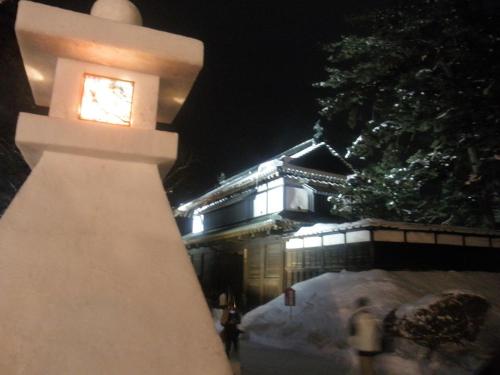Ishiba Residence
menuMenu
A merchant's house designated as an Important Cultural Property of Japan, vividly preserving the atmosphere of the Edo period.




Highlights
- A historic merchant house designated as a National Important Cultural Property
- A precious building offering a glimpse into Edo-era life
- Attractive for its solid construction and traditional design
- Learn about the lifestyle and culture of the time
- Close to tourist attractions such as Hirosaki Castle and the Nakamachi Traditional Building Preservation District
Basic Information
- Address
- 88 Kameko-cho, Hirosaki City, Aomori Prefecture Search for tourist attractions in Aomori
- Access
- Take the Konan Bus bound for Hama-no-machi from JR Hirosaki Station and get off at "Kame no Ko-mon mae". It's a 1-minute walk from there. Show route
- Op.Hours
- 9:00 AM - 5:00 PM
- Cld.Days
- Irregular
- Fee
- Admission fee: Yes
Overview
Recommended nearby attractions
Old Sasamori Residence

A precious, nationally designated Important Cultural Property where you can experience the life of a samurai family in the Edo period.
Former Iwata Family Residence

A precious historical site offering a glimpse into the lives of samurai during the Edo period.
Old Kasuishi House

A precious cultural property where you can experience the life of an Edo-period farmhouse.
Old Ito Family Residence

A former residence of a Hirosaki Clan physician, located in the samurai district near Hirosaki Castle. A precious historical site where you can experience the life of that era.
Hirosaki Nakamachi Important Preservation District for Groups of Traditional Buildings

A precious area where an Edo-era samurai district remains virtually untouched. Embark on a journey to experience history and culture, vividly preserved from a bygone era.
Kuroishi City Nakamachi Important Preservation District for Groups of Traditional Buildings

Stroll through the historically charming streets lined with the "komise" arcades, where shopping was possible even during the snowy winters!
Former Umeda Family Residence

A nationally important cultural property offering a glimpse into the lives of Hirosaki藩医 (han-i, physicians serving the feudal lord).
Kunohe Family Residence

A valuable cultural property where you can experience the life of a wealthy farmer during the Edo period.
Hirosaki Gakuin Foreign Missionary House

A precious building where you can feel the history and culture, blending the beauty of Meiji-era Western architecture with Japanese aesthetics.
Osamu Dazai Memorial Museum "Shayo-kan"

The former home of Osamu Dazai, this grand mansion is designated as an Important Cultural Property of Japan. Experience his life and the world of his works.
Nearby Hotels
Ishiba Ryokan

Hirosaki Grand Hotel

Dormy Inn Hirosaki Natural Hot Spring

Hotel Hyper Hills Hirosaki

Smile Hotel Hirosaki

Hirosaki Plaza Hotel

Hirosaki Park hotel

Guest House Chara

Super Hotel Hirosaki

HOSTEL HIROSAKI

